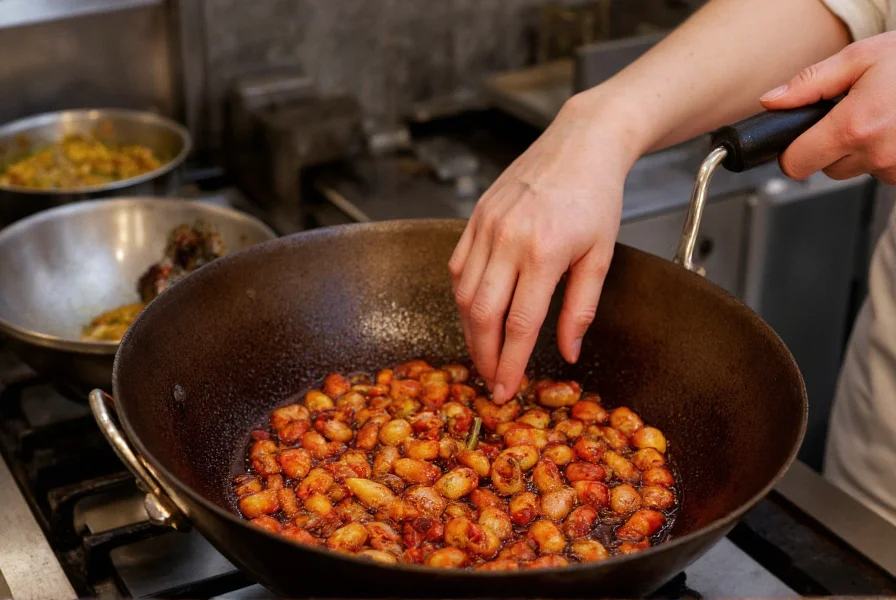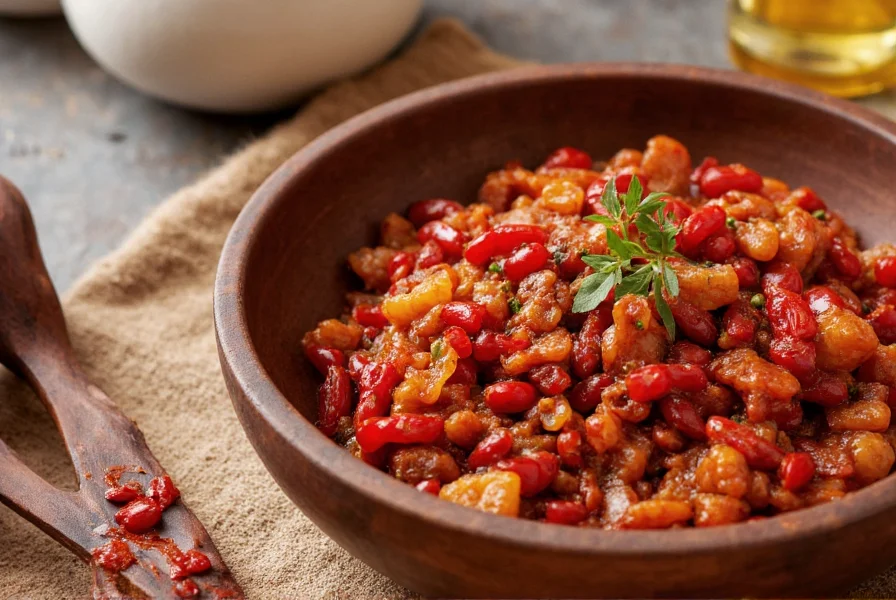Sichuan Pepper Express restaurants have become increasingly popular worldwide as interest in authentic regional Chinese cuisine grows. Unlike generic \u201cChinese food\u201d restaurants that often serve Americanized dishes, these specialized eateries focus specifically on the bold, complex flavors of Sichuan province, where the unique sensation of \u201cma la\u201d (numbing and spicy) defines the culinary tradition.
Understanding Sichuan Cuisine's Signature Ingredient
Sichuan peppercorns (huajiao) aren't actually peppers but the dried berries of the prickly ash tree. What makes them extraordinary is their ability to create a tingling, numbing sensation on the tongue called \u201cparesthesia\u201d. This unique characteristic, when combined with chili heat, creates the famous \u201cma la\u201d flavor profile that defines authentic Sichuan cooking.

What to Expect at a Typical Sichuan Pepper Express
While specific menus vary by location, most Sichuan Pepper Express establishments share common features that distinguish them from other Chinese restaurant concepts:
| Menu Category | Signature Dishes | Flavor Profile |
|---|---|---|
| Classic Entr\u00e9es | Kung Pao Chicken, Mapo Tofu, Dan Dan Noodles | Bold ma la with complex spice layers |
| Regional Specialties | Twice-Cooked Pork, Fish-Flavored Eggplant | Distinctive Sichuan preparation techniques |
| Appetizers | Sichuan-style cold dishes, pickled vegetables | Refreshing contrasts to spicy mains |
| Beverage Pairings | Light teas, barley water | Cooling complements to ma la sensation |
Identifying Authentic Sichuan Pepper Express Establishments
Not all restaurants using \u201cSichuan\u201d in their name deliver authentic regional cuisine. True Sichuan Pepper Express concepts demonstrate these characteristics:
- Proper use of Sichuan peppercorns: The distinctive numbing sensation should be present but balanced, not overwhelming
- Regional specificity: Menus focus on dishes from Sichuan province rather than generic Chinese offerings
- Cooking techniques: Traditional methods like \u201cdry-frying\u201d and \u201cquick-boiling\u201d are employed
- Ingredient quality: Use of authentic chili varieties (like facing heaven peppers) and properly processed Sichuan peppercorns
The Ma La Experience: More Than Just Spicy Food
Many newcomers to Sichuan cuisine mistakenly equate it simply with \u201cspicy food.\u201d The authentic experience involves multiple dimensions:
- Numbing sensation (ma): Caused by hydroxy-alpha-sanshool in Sichuan peppercorns
- Heat (la): From various chili peppers, carefully balanced in intensity
- Complex layering: Incorporation of sweet, sour, salty, and umami elements
- Aromatic components: Use of fermented black beans, garlic, ginger, and other seasonings
This multi-dimensional approach creates what culinary experts call \u201cthe seven flavors and eight tastes\u201d of Sichuan cooking, where dishes evolve in flavor as you eat them.
Regional Variations Within Sichuan Cuisine
Even within Sichuan province, culinary traditions vary significantly by region, which affects what you might find at different Sichuan Pepper Express locations:
- Chengdu style: More emphasis on complex spice blends and numbing sensation
- Chongqing style: Bolder, oilier dishes with intense heat levels
- Riverine style: Greater use of freshwater fish and lighter preparations
- Hilly region style: More preserved foods and smoked ingredients

Navigating the Menu: Tips for First-Time Diners
For those new to authentic Sichuan cuisine, navigating a Sichuan Pepper Express menu can be intimidating. Consider these practical tips:
- Start with moderately rated dishes (many menus indicate heat levels) before progressing to \u201cextra spicy\u201d options
- Order a cooling beverage like barley water or light oolong tea to balance the ma la sensation
- Try the chef's recommendations for balanced meal composition
- Don't mistake the numbing sensation for spiciness \u2013 they're distinct elements
- Ask about regional specialties that might not appear on standard menus
The Global Expansion of Authentic Sichuan Cuisine
The proliferation of Sichuan Pepper Express concepts reflects a broader trend: increasing global appreciation for authentic regional Chinese cooking. As food critics and culinary travelers have explored beyond Americanized Chinese food, demand has grown for restaurants that specialize in specific Chinese regional cuisines rather than generic \u201cChinese food.\u201d
This movement toward authenticity has led to more precise labeling, with establishments specifying whether they serve Cantonese, Shanghainese, Hunan, or Sichuan cuisine. The \u201cExpress\u201d designation typically indicates a streamlined menu and faster service model while maintaining culinary authenticity \u2013 making traditional Sichuan flavors more accessible to busy urban diners.
Frequently Asked Questions
What makes Sichuan Pepper Express different from other Chinese restaurants?
Sichuan Pepper Express establishments specialize specifically in Sichuan province cuisine rather than offering a broad range of Chinese regional dishes. They focus on the distinctive \u201cma la\u201d (numbing-spicy) flavor profile created by authentic Sichuan peppercorns and chili peppers, using traditional preparation methods while typically offering faster service than full-service restaurants.
Is Sichuan Pepper Express cuisine extremely spicy?
While heat is a component, authentic Sichuan cuisine is more about the complex \u201cma la\u201d sensation (the combination of numbing from Sichuan peppercorns and heat from chilies) than单纯的 extreme spiciness. Many dishes offer balanced flavor profiles, and reputable Sichuan Pepper Express restaurants typically indicate heat levels on their menus, allowing diners to select appropriate dishes for their tolerance.
What are the most authentic dishes to try at a Sichuan Pepper Express?
For an authentic experience, try Mapo Tofu (properly made with minced pork, fermented black beans, and Sichuan peppercorns), Dan Dan Noodles (with the characteristic chili oil and preserved vegetables), and Kung Pao Chicken (with dried chilies and authentic Sichuan peppercorns). These dishes showcase the essential \u201cma la\u201d profile that defines Sichuan cuisine when prepared traditionally.
Why does my mouth feel numb when eating at Sichuan Pepper Express?
The numbing sensation (called \u201cma\u201d) comes from hydroxy-alpha-sanshool in authentic Sichuan peppercorns. This compound stimulates nerve endings in a unique way that creates a tingling, vibrating sensation rather than actual pain. It's a defining characteristic of Sichuan cuisine and works synergistically with the chili heat (\u201cla\u201d) to create the complete \u201cma la\u201d experience that enhances other flavors in the dish.
How can I tell if a Sichuan Pepper Express restaurant is authentic?
Look for proper use of Sichuan peppercorns (visible in dishes, creating the characteristic numbing sensation), regional menu specificity (focusing on Sichuan province dishes rather than generic Chinese food), traditional cooking techniques, and Chinese staff members who can explain the regional origins of dishes. Authentic establishments often indicate heat levels on menus and may offer regional variations (Chengdu vs. Chongqing styles).











 浙公网安备
33010002000092号
浙公网安备
33010002000092号 浙B2-20120091-4
浙B2-20120091-4